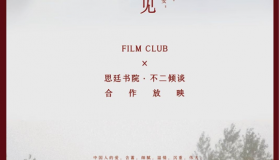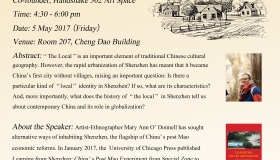Solving Shortage in the Market for Blood in China: Evidence from Big Data and Large-scale Field Experiment
 |
||
|---|---|---|
|
Topic: |
Solving Shortage in the Market for Blood in China: Evidence from Big Data and Large-scale Field Experiment
|
|
|
Time&Date: |
10:30am-12:00pm, 2018/3/26 |
|
|
Venue: |
Room A619, Teaching A |
|
|
Speaker: |
Dr. Tianshu Sun (University of Southern California) Tianshu Sun's research conducted in collaboration with leading private and public sector platforms addresses how firms can use business analytics and large-scale field experiments in conjunction with big data to improve business decisions. His current research focuses on understanding 1) how digital platforms can use IT-enabled and analytics-driven interventions to influence information sharing among individuals, and 2) how organizations can leverage mobile devices and Internet of Things to influence individuals' offline behaviors. Tianshu has worked closely with a variety of organizations including Facebook, Alibaba, LivingSocial, Adobe and Ministry of Health. Many findings from these studies have been implemented by collaborating organizations. Tianshu has given over 60 talks at top universities and international conferences, and has research papers published in Management Science and Journal of Health Economics. Tianshu's research has received nine Best Paper Awards, and has been supported by grants from the Adobe, Soros Foundation and Marketing Science Institute.
|
|
|
Abstract: |
Blood shortage is common in China and has led to major problems in healthcare, but the challenge is often difficult to solve through price adjustment, because of safety and ethical concerns. In this talk, I will provide an overview on the effectiveness of different methods, including mechanism design, economic reward and behavior intervention, in addressing such challenge. My coauthors and I have studied those methods in the market for blood in China in the past few years using both population-level administrative dataset and large-scale randomized field experiment.
In the first paper (Sun, Lu and Jin 2016 Journal of Health Economics), we study two non-price methods that are often used in China to alleviate shortage for human blood. The first method is informing existing donors of a current shortage via a mobile message and encouraging them to donate voluntarily. The second method is asking the patient’s family or friends to donate in a family replacement(FR) program at the time of shortage. Using 447,357 individual donation records across 8 years from a large Chinese blood bank, we show that both methods are effective in addressing blood shortage in the short run but have different implications for total blood supply in the long run. We compare the efficacy of these methods and discuss their applications under different scenarios to alleviate shortage.
In the second paper, we conduct a large-scale randomized field experiment involving 80,000 participants to test the effect of behavioral intervention and economic reward on group donation. Recent literature has established that people donate more when donating in a group. However, little is known about how to motivate donors to form a group in the first place. Our experiment generates three findings along this line: 1) blood banks can motivate group formation to increase blood donation, but only with appropriate economic reward; 2) economic reward conditional on group donation works through a sorting mechanism and attracts donors different from those under individual reward; 3) participants donate a greater amount of blood when donating in group. We further perform structural estimation on field experiment data and find that rewarding group donors is four times cost effective than rewarding individual donors in motivating blood donation. Finally, we conduct policy simulations and provide additional insights on the optimal design of economic rewards and targeting strategy.
|
|




